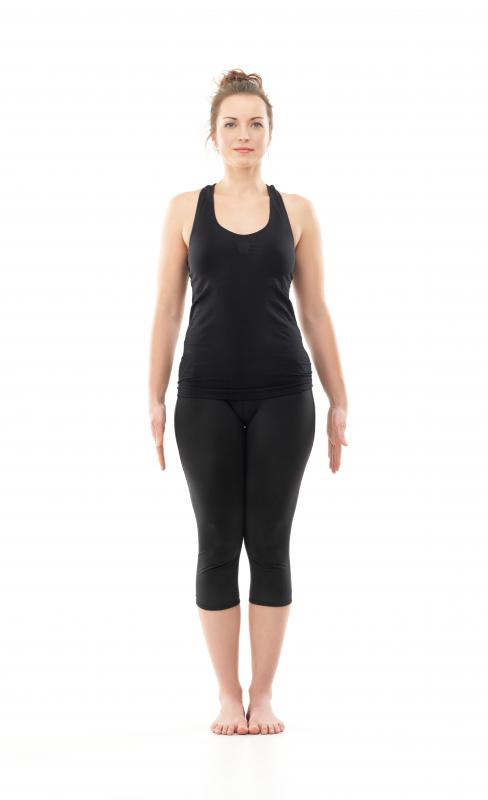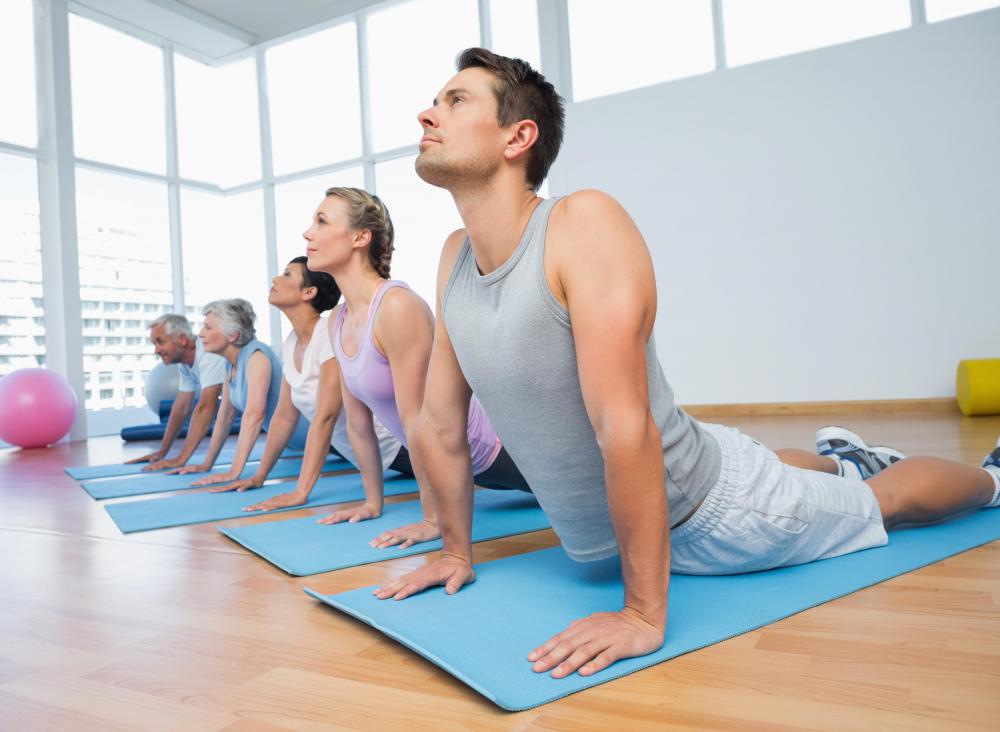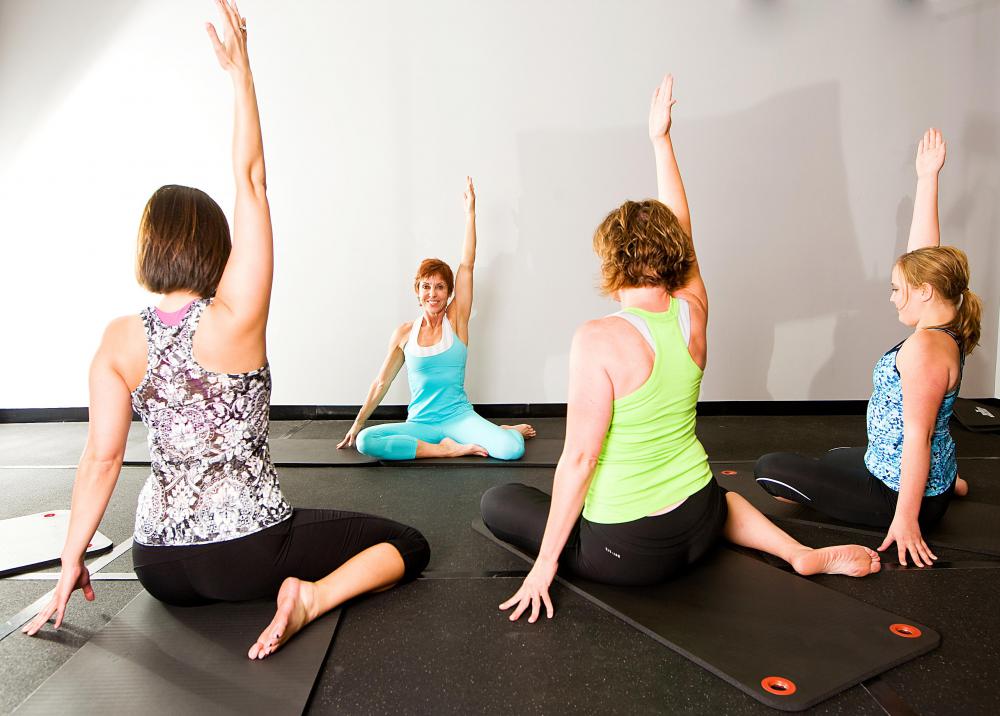At WiseGEEK, we're committed to delivering accurate, trustworthy information. Our expert-authored content is rigorously fact-checked and sourced from credible authorities. Discover how we uphold the highest standards in providing you with reliable knowledge.
What are the Different Types of Yoga for Beginners?
The different types of yoga for beginners include clearing the mind through focused breathing exercises and taking the body through poses which stretch the muscles without straining them. Introductory exercises typically involve standing or lying in neutral positions which allow the chest and abdomen to expand while stretching the back and legs. Breathing should take place deep in the abdomen where the diaphragm can expand the rib cage and fill the lungs completely.
Yoga is a series of poses designed to increase flexibility, promote circulation, calm the spirit, and focus the mind through meditation. There are many levels of yoga designed to challenge participants with increasingly demanding poses that require greater mental focus and flexibility. Yoga classes are often taught at local community centers, hospitals, yoga centers, and gyms. These classes may be categorized by experience level or by physical limitations, such as pregnancy and rehabilitation, among other factors. Exercises may also be learned by watching instructors on television.

Two basic poses for yoga for beginners are savasana and tadasana. These poses may be performed by participants of any age and any level of flexibility. Savasana is also called corpse pose and involves the student lying down on the floor on her back with her hands loosley at her sides. The student may take her mind through the different muscles of the body, relaxing each one individually as she clears her mind. Tadasana, mountain pose, is the foundation for all standing positions, and the student may perform this by standing with feet together, shoulders back, and head held relaxed on the neck.

Adho mukha svanasana and urdhva mukha svanasana are two slightly more challenging but equally rewarding poses commonly used in yoga for beginners. Adho mukha svanasana, or downward facing dog, opens the shoulders and decompresses the spine, creating a full stretch through the back and the hamstrings when done correctly. The student begins by laying face down on the floor, hands placed evenly by the shoulders, and presses the hips up and back towards the wall so that her weight is distributed evenly across her hands and feet. Urdhva mukha svanasana, or upward facing dog, is a backbend that opens the muscles of the chest and stretches through the back and inner thighs, down to the toes. The students begins similarly lying face down on the floor, hands resting by the lower rib cage, and presses upwards through the arms, lifting the heart towards the ceiling.

These exercises are designed to relax and strengthen the body, and are built on proper breathing awareness techniques. New students are often taught a practice termed diaphragmatic breathing which utilizes the diaphragm muscle for deep breathing. People commonly overuse their chest muscles for breathing which can be seen in the rise and fall of the rib cage. These muscle are not designed for extended use, however, and can leave an individual feeling tired if depended on while performing the various poses used during yoga for beginners. Diaphragmatic breathing pulls air into the lungs through the movement of the diaphragm in the lower abdomen, and this muscle can withstand long periods of heavy breathing which leaves the student feeling refreshed and calmed.
AS FEATURED ON:
AS FEATURED ON:

















Discuss this Article
Post your comments